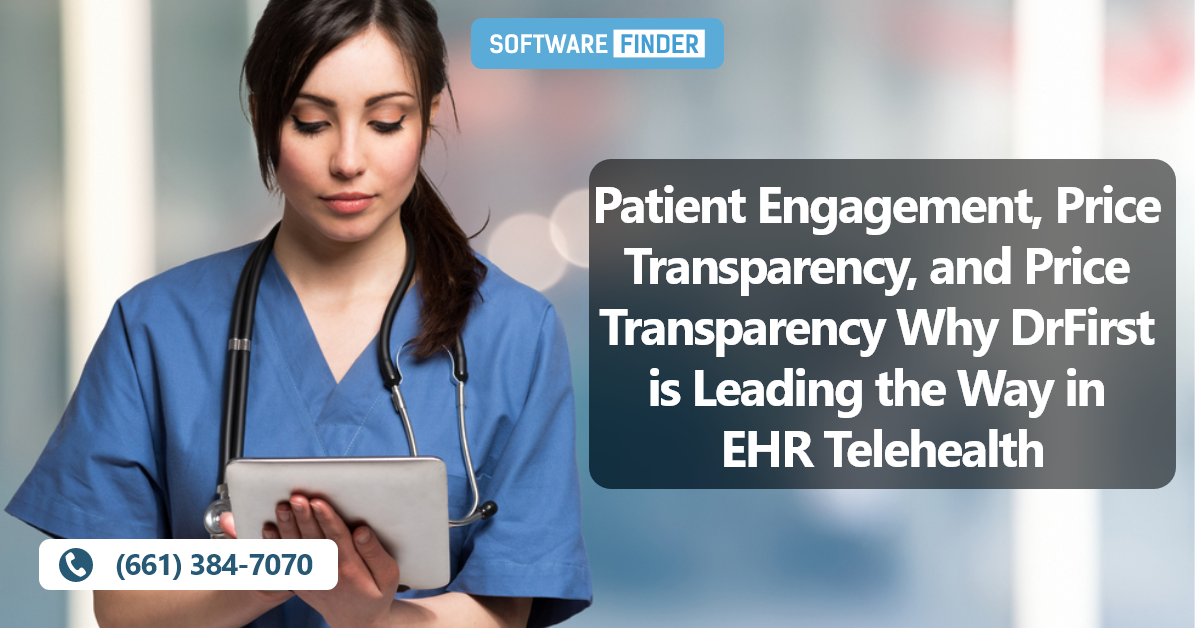Using an EHR or Health Information System is an important part of a physician’s practice. The software allows a doctor to see a patient’s full medical history and make recommendations to improve their health. It also allows for more efficient documentation of patient visits and more accurate billing. However, there are a number of challenges that physicians encounter when using this technology. Among these are patient engagement, medication adherence, and price transparency.
telehealth
Among the many reasons DrFirst EHR is leading the way in telehealth is their patient engagement solution. They have developed communication tools to promote medication adherence and improve health outcomes.
In order to implement telemedicine, a health system must first establish basic protocols and procedures. The American Medical Association (AMA) has developed comprehensive guidelines for telemedicine in primary care.
The next step is to educate patients about telemedicine. In addition to providing printed guides, telemedicine service providers can provide phone and email assistance.
Educating patients is a challenge. Many patients are unaware of the risks involved in telemedicine. Telemedicine experts say this is a real problem.
Fortunately, the telehealth industry is advancing faster than ever. New equipment is being developed, and many tools are more affordable.
price transparency
Increasingly, consumers and providers alike are turning to price transparency tools to make more informed decisions about the costs of prescriptions. These tools can help improve patient outcomes and alleviate patients’ concerns about costs.
The cost of medications can vary widely depending on geography, pharmacy and insurance coverage. There are a variety of solutions for implementing real-time benefit comparison tools.
DrFirst’s suite of price transparency tools educates patients about the cost of their medications and provides them with therapeutically-appropriate alternatives. The company’s myBenefitCheck service includes both out-of-pocket costs and required prior authorizations.
Physicians can also leverage price transparency tools to have cost conversations with patients at the point of care. Patients are more likely to take medications if they can afford them. Increasing prescription adherence is critical to improving clinical outcomes. Using a platform such as DrFirst’s myBenefitCheck can help physicians drive this process.
patient engagement
Investing in patient engagement technologies is a smart move for health care practices. They will be rewarded with a more efficient workflow, better patient outcomes, and lower costs.
According to the Agency for Healthcare Research and Quality (AHRQ), patient engagement is the “use of information technology, communications, and collaborative partnerships to increase the involvement of patients in their own care.” This includes both organizational policies and behaviors by patients. However, the AHRQ does not define the patient portal.
While patient portals are touted as a great way to engage patients, there is little evidence that they actually have a positive impact on patient engagement. Some studies show that patients have difficulty using patient portals, and others show that the use of patient portals is a small fraction of total patient engagement.
medication adherence challenges
Script Your Future, a health literacy initiative of the National Consumers League (NCL), challenged interdisciplinary student teams to create medication adherence solutions that would be useful to consumers. Teams competed in 200 events in 35 states, reaching over three million consumers. This included outreach programs, chronic condition education, and innovative solutions.
The Challenge’s main objective was to increase awareness of medication adherence and to recognize the roles of each member of the patient’s health care team. Team members engaged with consumers at a variety of local events, including health fairs, community centers, and local workplaces. The students also appeared on morning television shows with Miss Missouri USA. They conducted health screenings, referred patients to seek further care, and provided medication adherence education.
partnering with EHR/HIS vendors
Choosing the right technology partner is important to your EHR. Your technology partner should be able to validate their expertise in your industry and offer solutions that address your specific needs. Having a single vendor relationship can help to streamline workflow and improve efficiencies. It can also aggregate industry networks and deliver high-value solutions.
DrFirst offers a full suite of technology solutions that are scalable and innovative. They provide flexible integration options and regulatory expertise to help EHR/HIS partners meet the needs of their clients.
DrFirst’s EHR and HIS solutions are used by more than 220,000 healthcare professionals across the country. DrFirst focuses on filling gaps in healthcare while increasing efficiency and profitability for stakeholders.
DrFirst is a leader in medication management and EHR/HIS integration. With over two decades of experience, DrFirst is a recognized leader in innovation. The company’s award-winning electronic prescribing platform is available to over 38 EHRs.
Among the many reasons DrFirst is leading the way in telehealth is their patient engagement solution. They have developed communication tools to promote medication adherence and improve health outcomes.
In order to implement telemedicine, a health system must first establish basic protocols and procedures. The American Medical Association (AMA) has developed comprehensive guidelines for telemedicine in primary care.
The next step is to educate patients about telemedicine. In addition to providing printed guides, telemedicine service providers can provide phone and email assistance.
Educating patients is a challenge. Many patients are unaware of the risks involved in telemedicine. Telemedicine experts say this is a real problem.
Fortunately, the telehealth industry is advancing faster than ever. New equipment is being developed, and many tools are more affordable.
